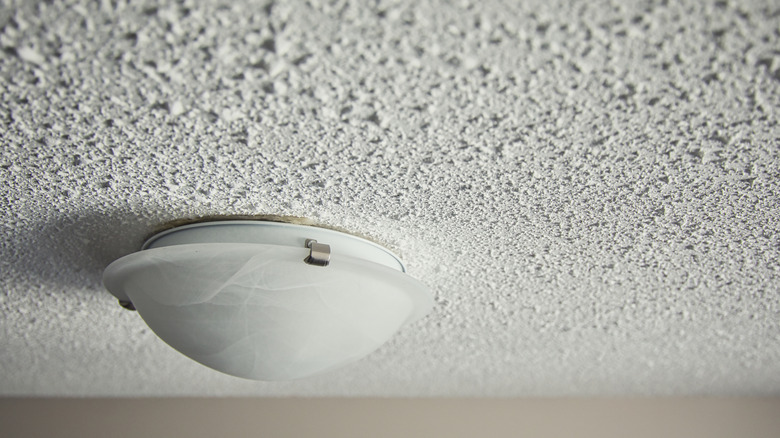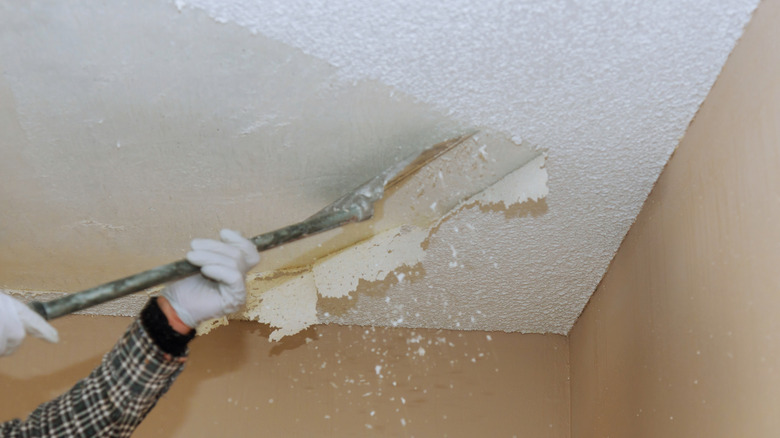The Best Method For Testing Your Popcorn Ceilings For Asbestos
Although once popular due to low installation costs, popcorn ceilings are no longer in vogue. If you have them in your home, you've probably considered removing or covering them — but before you do anything with your ceilings, you should first check them for asbestos. While the thought may make you a bit anxious, it's safe and easy to perform this test on your own, as long as you follow some simple precautions.
Asbestos is a material made of tiny fibers that was once commonly used in construction. Although its use is banned today, it can sometimes be found in older homes, often in the form of asbestos insulation. In an exclusive interview with House Digest, Michael Pinto, CEO of Wonder Makers Environmental, noted that asbestos may be present in both the substrate and spray-on surface of older popcorn ceilings. According to Pinto, "The best testing is a process that samples both materials."
"The easiest method to get a sample of all layers is to use a core-style sampler," continued Pinto, who has over 45 years of experience in controlling indoor contaminants. Asbestos Bulk Sampler Kits can be purchased online through Wonder Makers and similar organizations. If you're not able procure a core sampler, you can still perform a test at home. To start, Pinto said that you must mist a small section of your ceiling with a light soap and water mix to help prevent loose material from becoming airborne. Then, use a knife or chisel to remove a coin-sized sample; seal the sample inside two ziplock bags before shipping it to a laboratory, which you can find with a simple online search, for testing.
What to do if you have a positive result
If you're hesitant to perform your own asbestos test, don't worry. As Michael Pinto exclusively told House Digest, "The risk from carefully collecting a few samples is relatively low, especially if the sample area is misted during the sampling." There are also no requirements for homeowners to be certified or licensed in order to sample their own home. (The only exception, Pinto notes, is if you're a landlord testing a house that isn't your primary residence.)
However, you have to use hand tools to remove the sample, as Pinto cautioned that using power tools like drills and saws leads to higher exposure risks. Of course, a mask and goggles should also be worn. While you don't need to consult professionals to test your ceilings for asbestos, you'll want to have them handle removal in the event of a positive test. As Pinto explained, "Proper asbestos abatement utilizes a number of overlapping safeguards which are beyond the capabilities of most DIY aficionados. This is one activity where it is worth the expense of paying a professional so that the entire house is not cross-contaminated with airborne asbestos fibers."
If it is deemed to be free of asbestos, you can easily remove a popcorn ceiling on your own; however, you'll still want to take the reasonable safety precaution of wearing goggles and a mask. If you're not able to remove it, you can also cover your popcorn ceiling with drywall instead.

